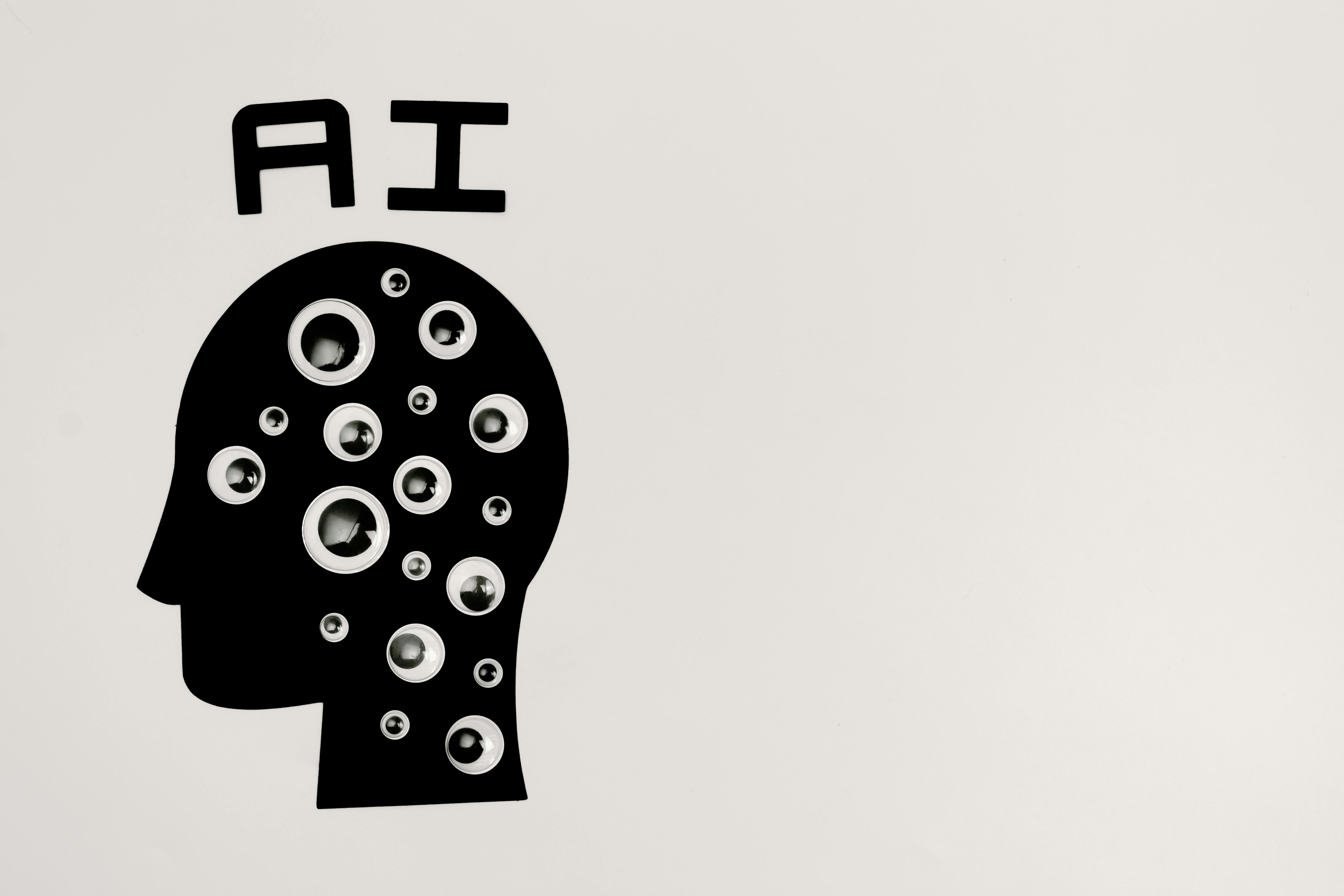AI Support Guides
Mar 14, 2025

Deepak Singla
IN this article
AI is transforming customer support. It’s fast, scalable, and available 24/7, making it easier than ever for businesses to handle high volumes of customer inquiries. From instant responses to round-the-clock availability, AI can significantly improve efficiency while reducing operational costs. But when done wrong, automation feels cold, impersonal, and frustrating—leaving customers feeling unheard rather than supported.
The AI Dilemma in Customer Support
AI is transforming customer support. It’s fast, scalable, and available 24/7, making it easier than ever for businesses to handle high volumes of customer inquiries. From instant responses to round-the-clock availability, AI can significantly improve efficiency while reducing operational costs. But when done wrong, automation feels cold, impersonal, and frustrating—leaving customers feeling unheard rather than supported.
The challenge isn’t whether to use AI, but how to use it effectively. Customers expect seamless, human-like interactions even when they know they’re speaking to a bot. If AI fails to capture the right tone, personalize responses, or recognize when human intervention is needed, it can quickly become a liability rather than an asset.
So, how do you strike the right balance? How can you automate support without losing the warmth, personality, and trust that customers expect from your brand?
This guide breaks down common AI pitfalls and provides strategies to ensure your support stays smart, efficient, and—most importantly—human.
Why AI in Customer Support Is No Longer Optional
Customers Expect Instant, 24/7 Help
Nobody likes waiting. AI lets you scale support, handle thousands of queries instantly, and meet customers where they are—any time, anywhere. A single bad experience can push a customer to a competitor, and AI ensures that doesn’t happen due to long wait times.
AI + Human = The Dream Team
AI tackles repetitive tasks (FAQs, refunds, order tracking).
Humans handle complex, emotional, and high-value interactions.
Together, they create effortless experiences that make customers stick around.
AI should act as an assistant, not a replacement, for human agents, freeing them to focus on deeper customer relationships.
✨ The Best Support Feels Effortless
AI isn’t here to replace humans. It’s here to enhance them. When done right, AI makes support seamless—not soulless. Companies that get it right make AI feel like a natural extension of their customer service teams.
Common Pitfalls: Where AI Goes Wrong
Generic, Robotic Responses
One of the most common issues with AI-driven customer support is a lack of conversational nuance. If AI-generated responses sound too mechanical or formulaic, they can make customers feel as though they are talking to an unhelpful machine rather than a responsive service team. AI that fails to adapt to different situations and customer tones often leads to frustration and disengagement.
Example:
❌ "We are sorry for the inconvenience."
✅ "That sounds frustrating—I’m here to help!"
Lack of Emotional Intelligence
Understanding customer emotions is a key component of effective customer support, but many AI systems struggle in this area. Without proper training, AI may misinterpret sarcasm, frustration, or urgency, leading to inappropriate or tone-deaf responses. This can escalate customer dissatisfaction rather than resolving issues efficiently.
Example:
Customer: "Great, another delay. Just what I needed!"
Bad AI response: "Thank you for your patience." (😬)
Inconsistent Brand Voice
A company’s brand voice is an essential part of its identity, and AI should reflect that consistently across all interactions. However, without careful implementation, AI responses can feel disjointed, shifting from overly formal to overly casual or simply failing to match the company’s established tone. Ensuring alignment with brand voice helps maintain trust and credibility.
Example:
Casual brand: "Uh-oh! Looks like something went wrong—let’s fix it fast!"
Corporate brand: "We’re working on a solution and will update you shortly."
AI That Blocks Access to Humans
AI should serve as an enhancement to customer service, not a barrier. If customers find themselves trapped in endless chatbot loops with no way to escalate to a human representative, frustration grows. AI should be programmed to recognize complex situations where a human touch is necessary and facilitate seamless transitions when needed.
Example: AI should be able to resolve common issues autonomously but provide a clear, frictionless handoff to human agents for complex or high-priority cases.
Ignoring Context and Customer History
AI that treats every interaction as a standalone event, ignoring past conversations and purchase history, feels impersonal and disconnected. Customers expect companies to remember their previous interactions and provide relevant, personalized support. Without access to contextual data, AI might repeat unnecessary questions or offer solutions that don’t fit the customer’s situation.
Example: A returning customer should not have to repeat account details or previous issues if AI can retrieve them automatically to improve efficiency and experience.
By recognizing and addressing these pitfalls, companies can develop AI-powered support that feels natural, responsive, and aligned with customer expectations.
How to Automate Customer Support Without Sounding Like a Robot
Train AI on Your Brand’s Voice
A brand’s voice is an essential part of its identity. AI should not sound generic or detached—it should reflect the tone and personality that customers expect from your company.
Make AI responses align with your tone—whether it’s friendly, professional, witty, or empathetic.
Use real customer interactions to fine-tune responses and constantly improve your knowledge base.
Choose AI models that allow for customization and adaptation.
Use AI to Enhance Support, Not Just Automate It
Automation should not be an excuse to remove human involvement. AI works best when it augments human support rather than replacing it entirely.
AI should handle a broad range of queries, but complex issues need a human touch.
AI and humans should work together—bots assist, humans resolve.
Provide AI with a clear escalation path when it encounters something outside its scope.
Personalization at Scale
Customers expect tailored support, not one-size-fits-all responses. AI should recognize individual needs and adapt accordingly.
AI should feel personal, not robotic.
It should analyze customer history, preferences, and past interactions to offer relevant responses.
Predictive AI can proactively offer assistance based on previous behavior.
Build Empathy Into AI Responses
Empathy is at the heart of great customer support. AI should be trained to recognize and appropriately respond to emotions.
AI should detect sentiment and adjust tone accordingly.
Responses should go beyond transactional language and convey understanding.
Avoid overly formal, robotic phrasing that lacks warmth.
Continuously Improve AI Interactions
AI is never "set and forget." It must be continually refined to ensure accuracy and effectiveness in customer interactions.
Regularly audit AI-generated conversations for accuracy and tone.
Gather customer feedback to refine responses.
Use A/B testing to see what works best.
Train AI to learn from previous mistakes to prevent repeated frustrations.
Enable Seamless AI-to-Human Handoffs
No matter how advanced AI becomes, there will always be cases where a human agent is needed. Ensuring a smooth transition from AI to human support is critical.
AI should recognize when a conversation requires human intervention.
Customers should not feel like they are stuck in an endless loop of automated responses.
Escalation to a live agent should be effortless and quick.
Real-World Examples
💡 Example 1: AI-Powered Support Done Right (Source)
ServiceNow, a leading digital workflow company, has effectively integrated AI agents into its customer service operations to enhance efficiency and responsiveness. By automating routine tasks and collaborating seamlessly with human employees, these AI agents have significantly improved the handling of customer inquiries. Notably, ServiceNow's AI agents have reduced the time required to manage complex cases by 52%, delivering substantial business value. While these AI systems currently operate with human oversight for final approvals, they are progressively advancing toward greater autonomy, reflecting the evolving landscape of AI in customer service.
💡 Example 2: Wendy's AI Chatbot Frustrates Drive-Thru Customers (Source)
Wendy's implemented AI chatbot systems in drive-thru lanes near its Ohio headquarters, aiming to streamline the ordering process. However, many customers reported dissatisfaction, describing the experience as frustrating and inefficient. Complaints included frequent interruptions, the need to repeat orders multiple times, and the bot's inability to handle specific requests, such as omitting certain ingredients. Some customers with speech impediments also found the system unusable. Despite these issues, Wendy's plans to expand the AI system to more restaurants, expressing confidence in the technology's potential for improvement. Implementing the strategies outlined in this article—such as training AI on brand voice, improving emotional intelligence, and ensuring seamless human escalation—could help Wendy's AI feel more natural and intuitive.
The Future of AI in Customer Support
AI is not just a tool for efficiency—it’s a fundamental shift in how businesses interact with their customers. The best AI-driven support is not only fast and accurate but also thoughtful and contextually aware. Customers no longer tolerate robotic, impersonal interactions; they expect technology to enhance—not replace—the human connection. The brands that win in this space will be those that successfully balance automation with authenticity.
AI should be leveraged to handle high volumes of inquiries, provide instant resolutions, and reduce friction, but it must always maintain the brand’s voice and values. The goal isn’t to remove human interaction entirely, but to ensure that when AI steps in, it feels as natural and supportive as a well-trained service agent.
Where to Start: Making AI Work for You
If your AI-driven customer support still feels impersonal, disconnected, or overly rigid, it’s time to rethink your approach. Start by auditing your AI’s interactions—are they consistent with your brand’s tone? Do they acknowledge customer emotions? Do they offer seamless paths to human assistance when necessary?
This is where Fini comes in. Fini specializes in AI-driven customer support that doesn’t just answer questions—it enhances your brand’s relationship with customers. Our platform ensures that your AI:
Maintains your unique brand voice
Understands customer sentiment and adjusts accordingly
Provides context-aware, personalized responses
Seamlessly integrates with human agents when needed
The future of AI-powered customer service isn’t about replacing people—it’s about making support smarter, faster, and more human.
Co-founder














